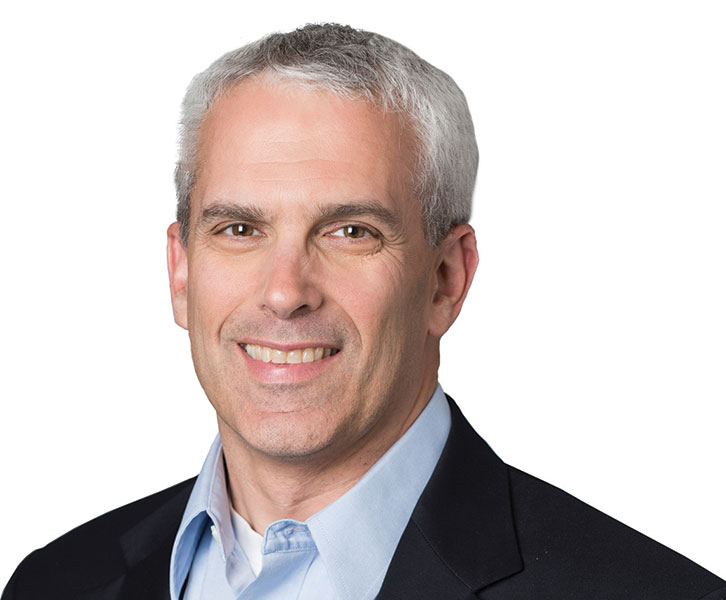In schools, digital transformation movements often begin as a ripple and struggle to grow into a transformational movement.
A wonderful example can be found in the transformation within the Parkland School District in Allentown, Penn. It began in earnest in 2015, two years into a pilot program where a cadre of teachers was experimenting with a new kind of technology-infused instruction designed to create more student-centered learning environments. The pilot had expanded to 60 teachers. Other educators were taking notice, students were responding positively and parents were realizing that innovative things were happening in these classrooms.
But then came the moment of doubt: How do we take this from pilot to scale? How can we take what we have learned and turn it into accepted practice? What about all the other classrooms?
As the pilot progressed, "we started to see the imbalance," said Tracy Smith, assistant to the superintendent for operations. "It became a haves and have-nots situation. If we really wanted to be equitable, we needed to scale the change."
A committee was formed with the goal of quickly creating a plan for helping every school and every teacher in the district provide a student-centered and personalized learning experience for each student. This was the beginning of the Parkland Ready 21 initiative, so named because of the ultimate vision of preparing students for the challenges and opportunities of college and the workplace of the 21st Century.
Fast forward to this fall. The district has just completed a successful rollout of a massive, district-wide 1-to-1 device initiative, which involves providing a Chromebook to every middle and high schooler, a key component of Ready 21. But they couldn’t have gotten to this place without formulating a plan that was about students and teachers first, not about technology and the bells and whistles.
This school district is taking a great approach. But planning for and executing system-wide change can be a tough challenge, one that other schools can’t quite achieve. Why?
Digital transformation in K-12 is situational and complicated. You have to understand the school district in which you reside and stay focused on clear goals and the human elements of change. You must ask yourself:
- Is there an appetite for transformation?
- What is the tolerance for risk?
- How can we drive iterative change, and is there an acceptance of prototyping and running experiments in the district?
- How do we create and market wins along the way?
- How do we ensure all stakeholders feel and experience the value associated with the change?
These are some critical attributes that should guide the scope, the rate, and the nature of the transformation. The process requires the hard work of planning, listening, gaining the buy-in of teachers and parents and having the willingness to admit mistakes and make adjustments.
There’s a lot Parkland School District had to consider as it built out its digital program:
- Would all teachers have the support and desire to change how they teach? Professional development, as always, would be key. Teachers would need help in learning new techniques and would need to be empowered enough to control their own development. The district created educator mentor programs, ran workshops, provided instructional coaches and put instructional support in each school.
- How could they ensure the technology would enhance the student-teacher relationship and not just get in the way? With every student receiving a device, they needed an easy way for them to access the dozens of tools and applications accessible to them in their classes. That meant adding a single sign-on system so teachers and students didn’t waste time trying to remember login credentials for each tool. "It’s about clearing the brush for our staff," Smith says.
- Would students be responsible with their devices? They would need to create a digital citizenship curriculum that every student would be required to take to help ensure appropriate online behavior. The district-owned devices would also have to block inappropriate websites so the technology would be used for learning and not become a distraction.
- Would all students have access to wifi and be able to do schoolwork from their homes? Through surveys, district leaders knew that the vast majority of families had access to high speed internet at home – but not all of them. To provide equitable access, they would need to launch a wifi program where students could sign out portable wifi devices to take home with them for access.
- What if teachers had tech issues in the classroom? The district would need to create a system where support was just down the hall.
"You have to start with the why," Smith said, looking back at the process that led to this fall’s exciting change. "What is your vision? How do you know when you’re done? You have to know what success looks like." In Parkland, it was all about providing student-centered, personalized learning experiences for students.
Has this district succeeded? Only time will tell. The school district continues to make adjustments, experiment, and then expand what works. This fall, they’re focused specifically on teaching strategies and pedagogy and fine-tuning the ecosystem of digital tools and applications that the district uses.
"This is what it’s all about," Smith said. "Pilot. Perfect. Expand."
Parkland leaders didn’t do all of this work alone. The Parkland Ready 21 committee includes teachers, parents and also consultants from outside the district. One such organization is Future Ready Schools, which I’d urge district leaders reading this to look at. Future Ready Schools offers resources, workshops and institutes to help educators and district leaders maximize digital learning opportunities and manage the process of transforming their schools into student-centered learning environments.
This article originally appeared in CIOReview and can be viewed here.
